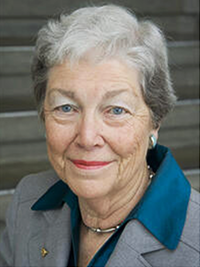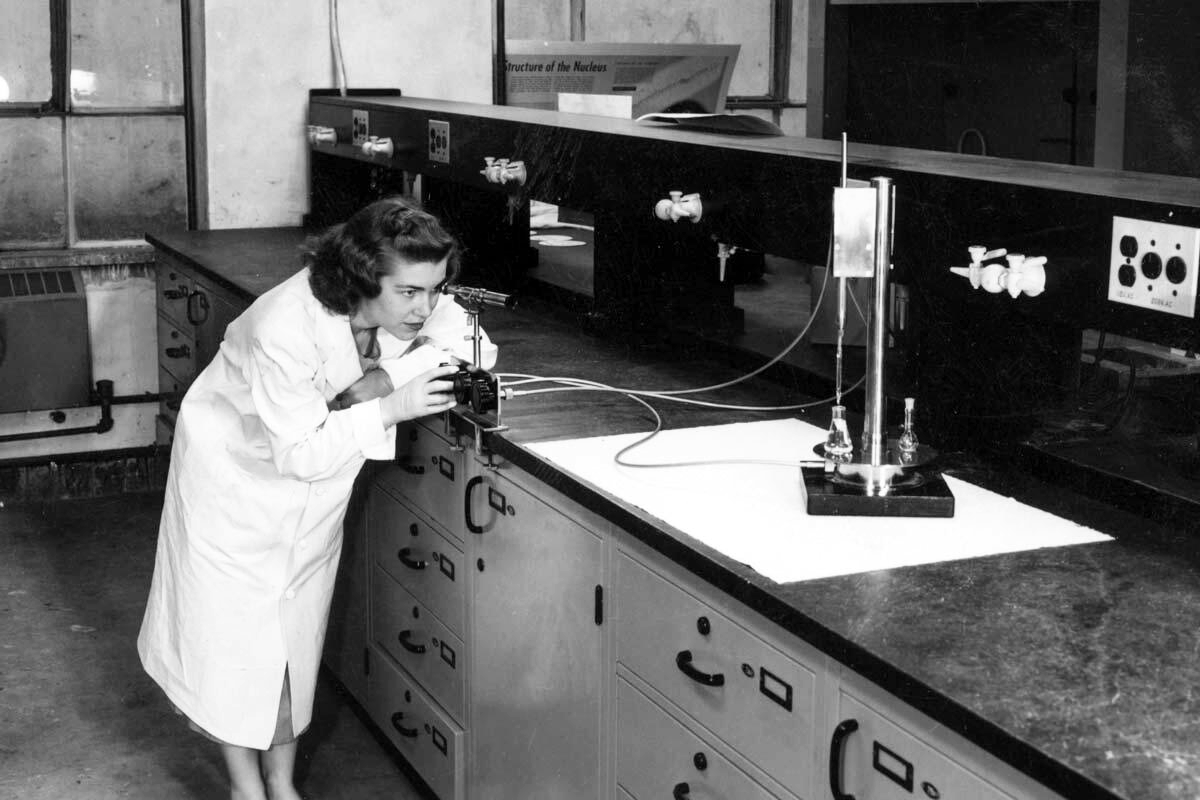 Darleane C. Hoffman Nov. 8, 1926 – Sept. 4, 2025
Darleane C. Hoffman Nov. 8, 1926 – Sept. 4, 2025
By ANNE BARANGER
Interim Dean
University of Berkeley
It is with profound sadness that I write to share the news that Darleane C. Hoffman, pioneering nuclear chemist and trailblazer for women in science, has passed away (Sept. 4, 2025) at the age of 98.
Professor Hoffman was born and raised in Iowa. She entered Iowa State College (now Iowa State University), where she first majored in applied art but later changed to chemistry, and there earned her B.S. (1948) and then her Ph.D. (1951) in physical (nuclear) chemistry.
She began her career as a Chemist at Oak Ridge National Laboratory from 1952-1953 then went to work at Los Alamos National Laboratory (1953-1984), where she became the first female Division Leader of the Chemistry and Nuclear Chemistry Division.
In 1984, Professor Hoffman joined the faculty in the Department of Chemistry at Berkeley and the Nuclear Science Division at Lawrence Berkeley National Laboratory as Leader of the Heavy Element Nuclear & Radiochemistry Group. She was co-founder and served as the first director of the Seaborg Institute for Transactinium Science at Lawrence Livermore National Laboratory from 1991-1996.
Her impact was unparalleled. Professor Hoffman fundamentally added to our understanding of radioactive elements. In 1971, it was widely believed that transuranium elements did not occur in nature, but in that year Professor Hoffman discovered small amounts of plutonium-244 in a rock formation. She also isolated and characterized fermium-257 – work that represented a monumental advance in the understanding of the fission process. In addition, Professor Hoffman studied the chemical and nuclear properties of rutherfordium, bohrium, and hassium, and she was a leader among the researchers who confirmed the existence of seaborgium.
 Darleane Hoffman in the lab in 1950 at Iowa State College (now Iowa State Univ. in Ames, Iowa. Courtesy/UC Berkeley
Darleane Hoffman in the lab in 1950 at Iowa State College (now Iowa State Univ. in Ames, Iowa. Courtesy/UC Berkeley
Professor Hoffman’s contributions were recognized with numerous prestigious awards and honors throughout her career. She was a recipient of the National Medal of Science, the highest honor a scientist can receive from the U.S. government.
In 2000, she was the second woman to receive the Priestley Medal from the American Chemical Society, the organization’s highest honor. Most recently, Professor Hoffman was awarded the Enrico Fermi Presidential Award (2023) for scientific discoveries advancing the field of nuclear and radiochemistry, for distinguished service to the Department of Energy’s missions in national security and nuclear waste management, and for sustained leadership in radiochemistry research and education.
Professor Hoffman’s legacy is a testament to her profound influence. She was a true luminary in her field, and her absence will be deeply felt. Please join me in honoring a beloved colleague.